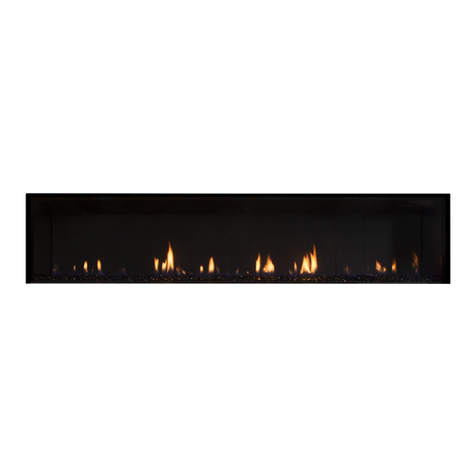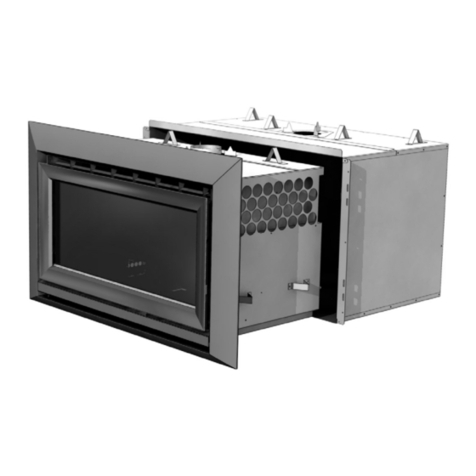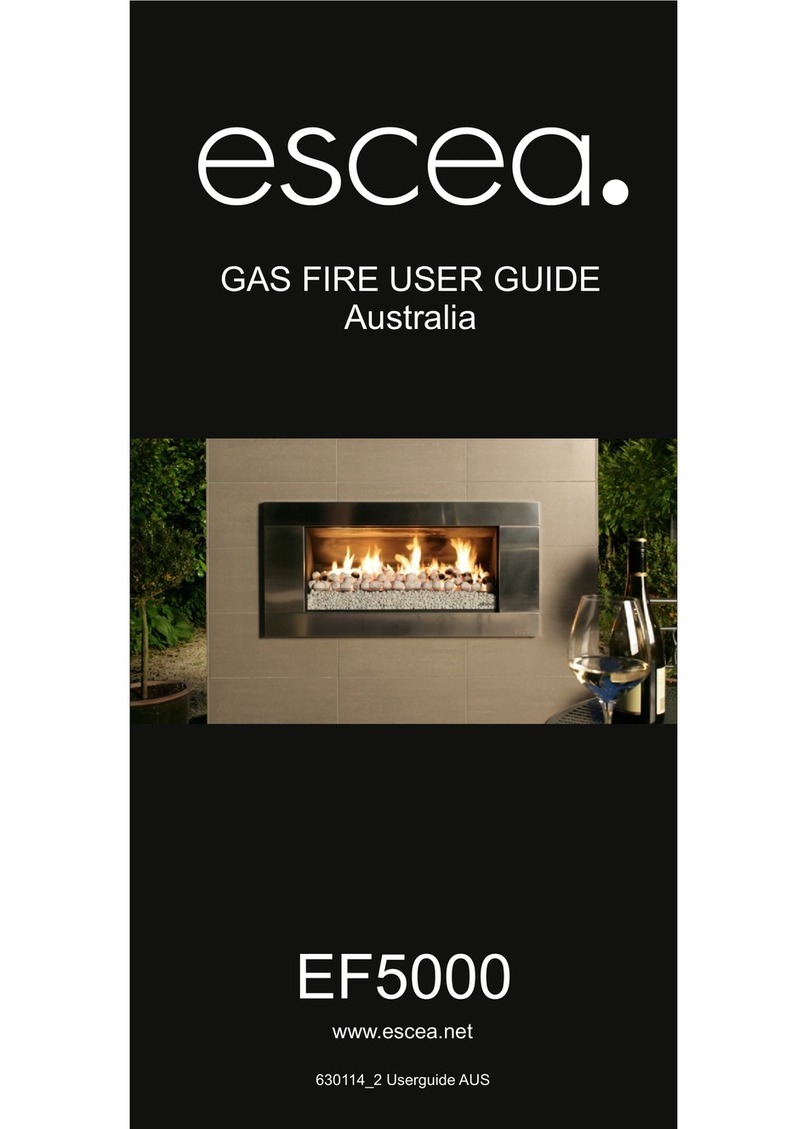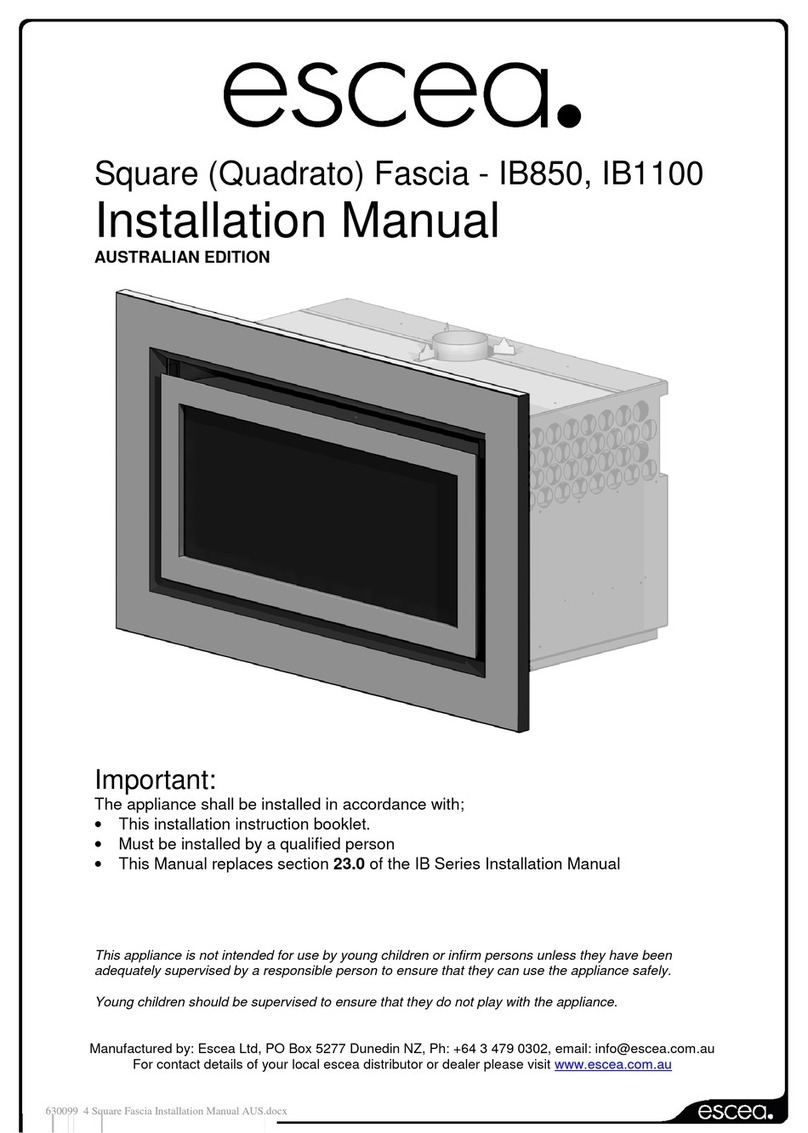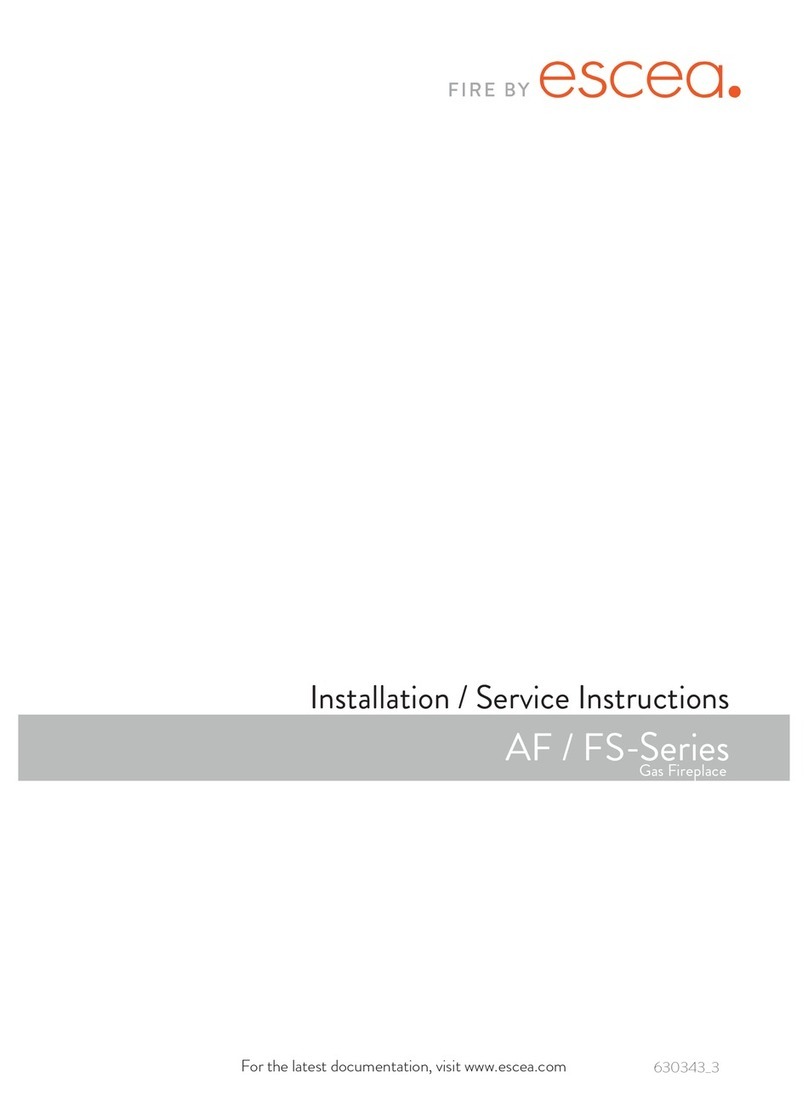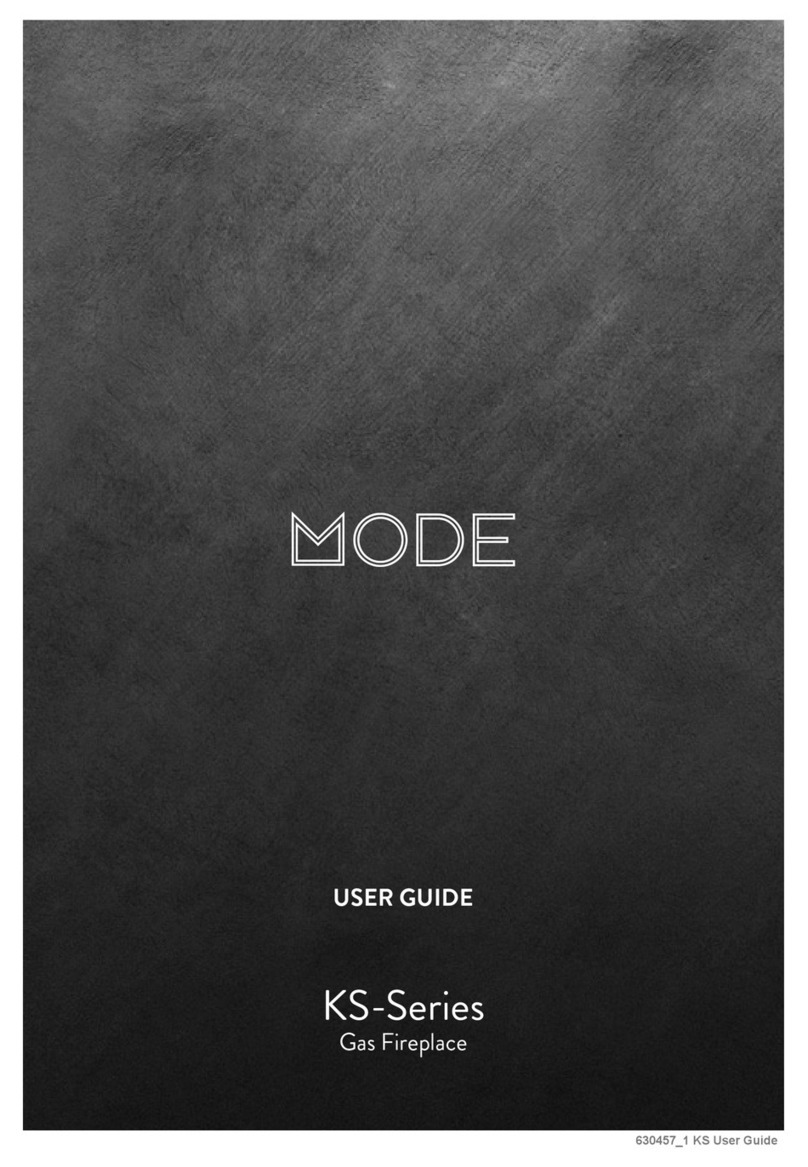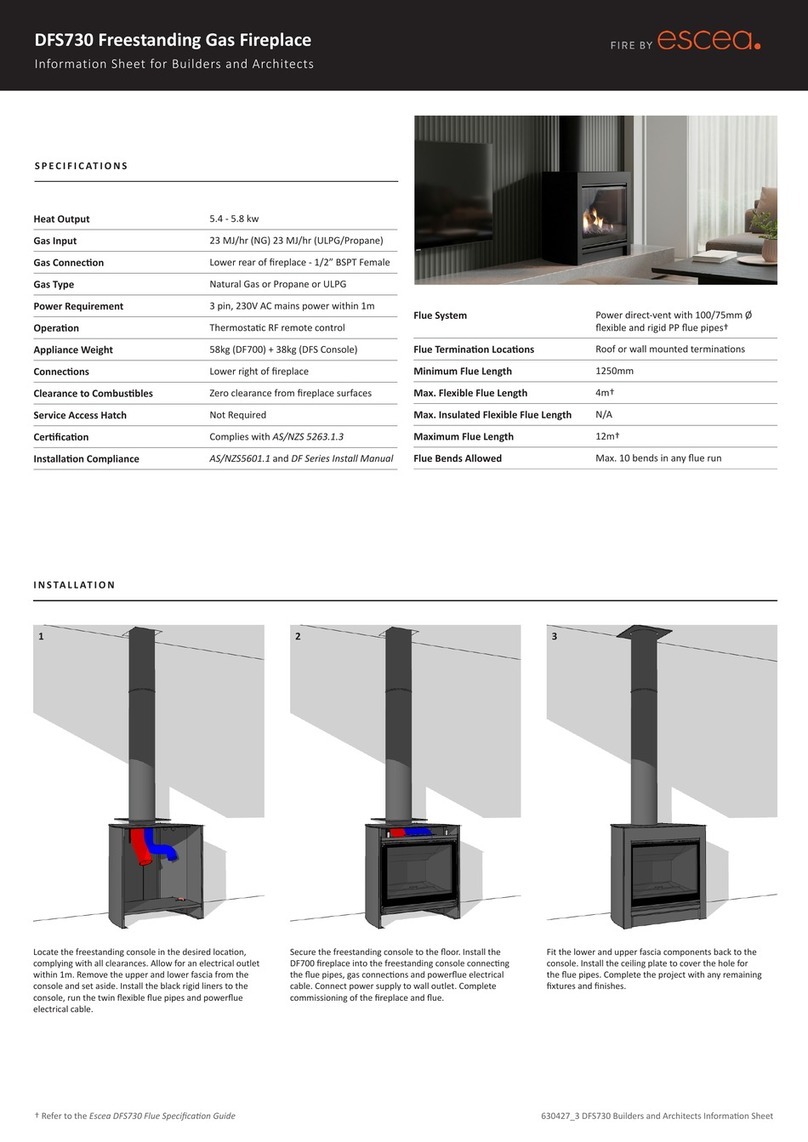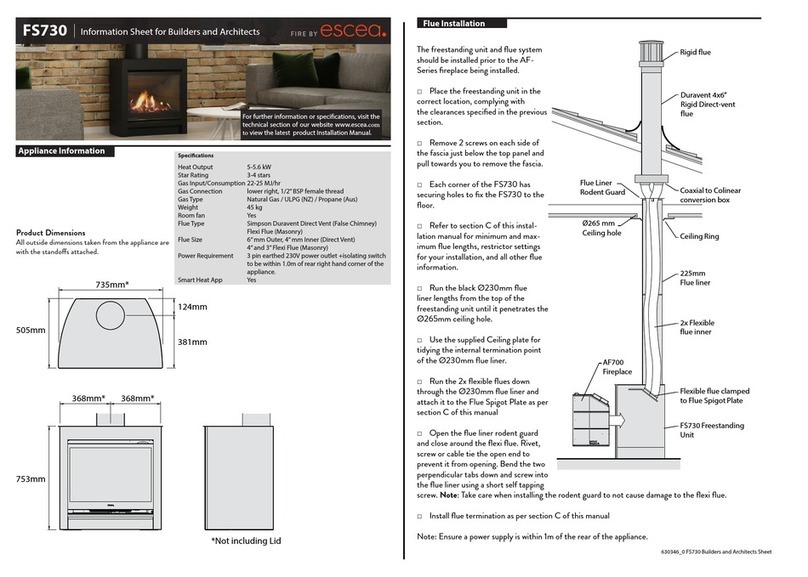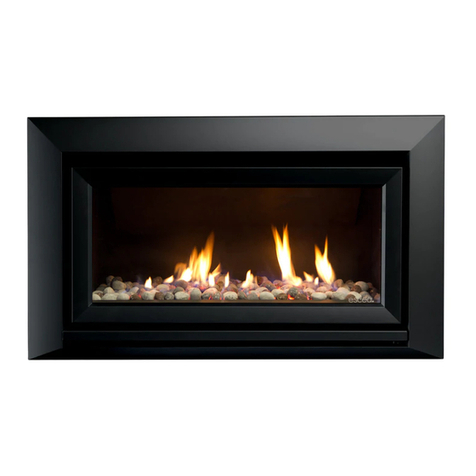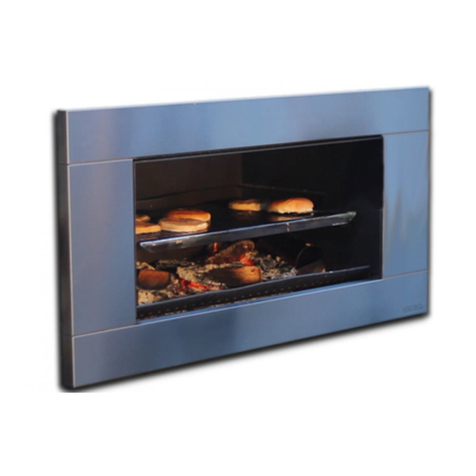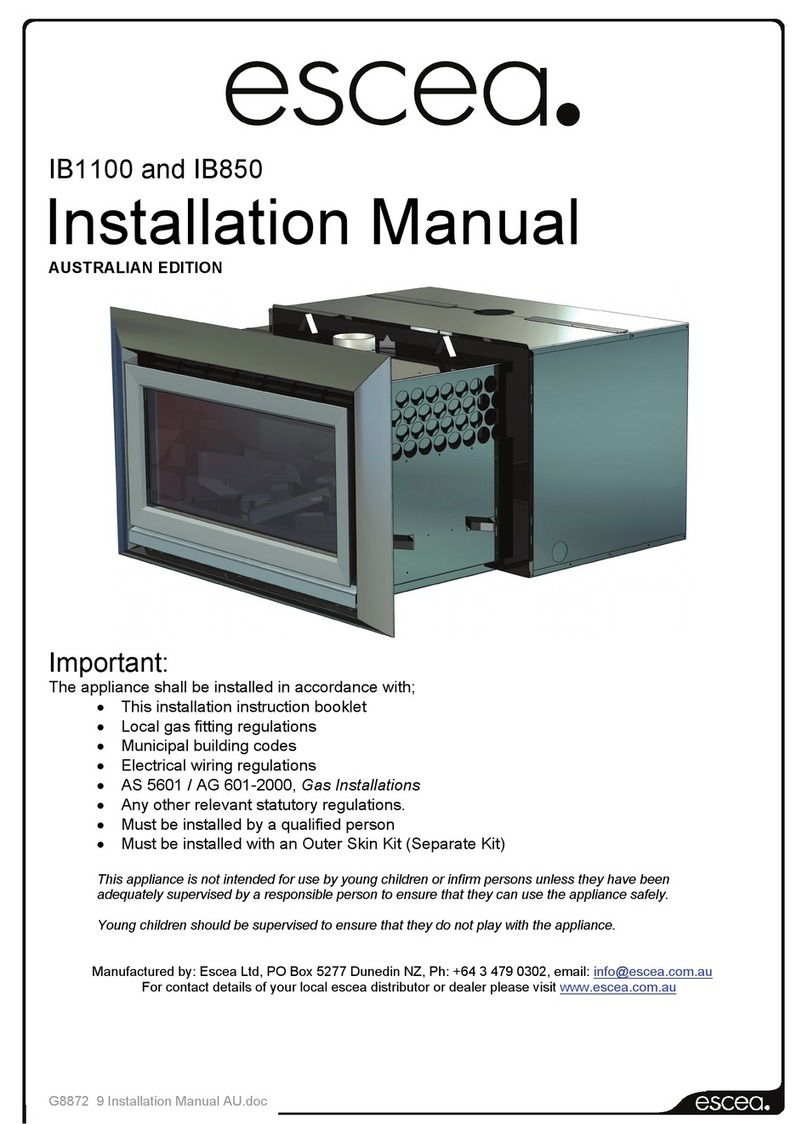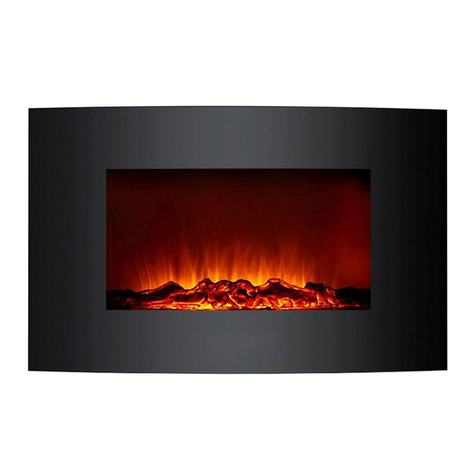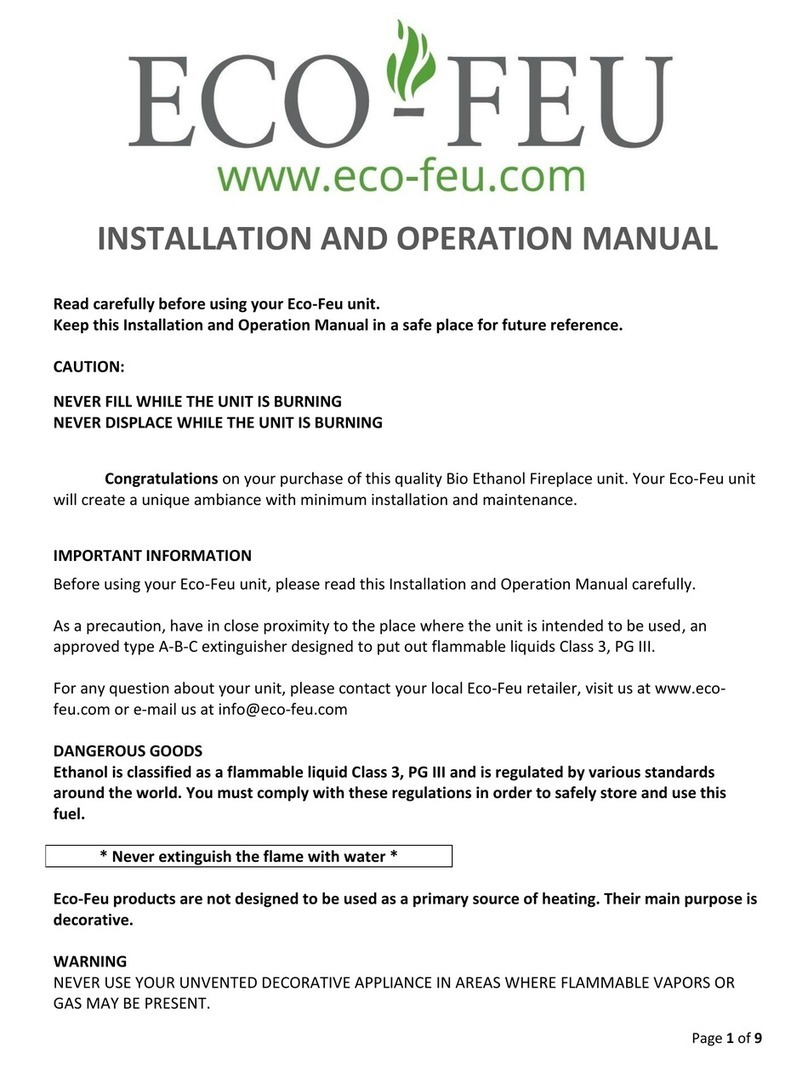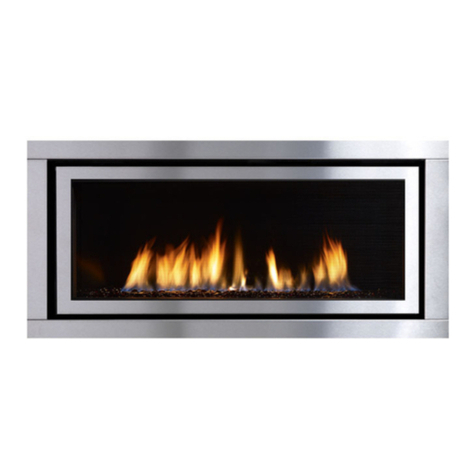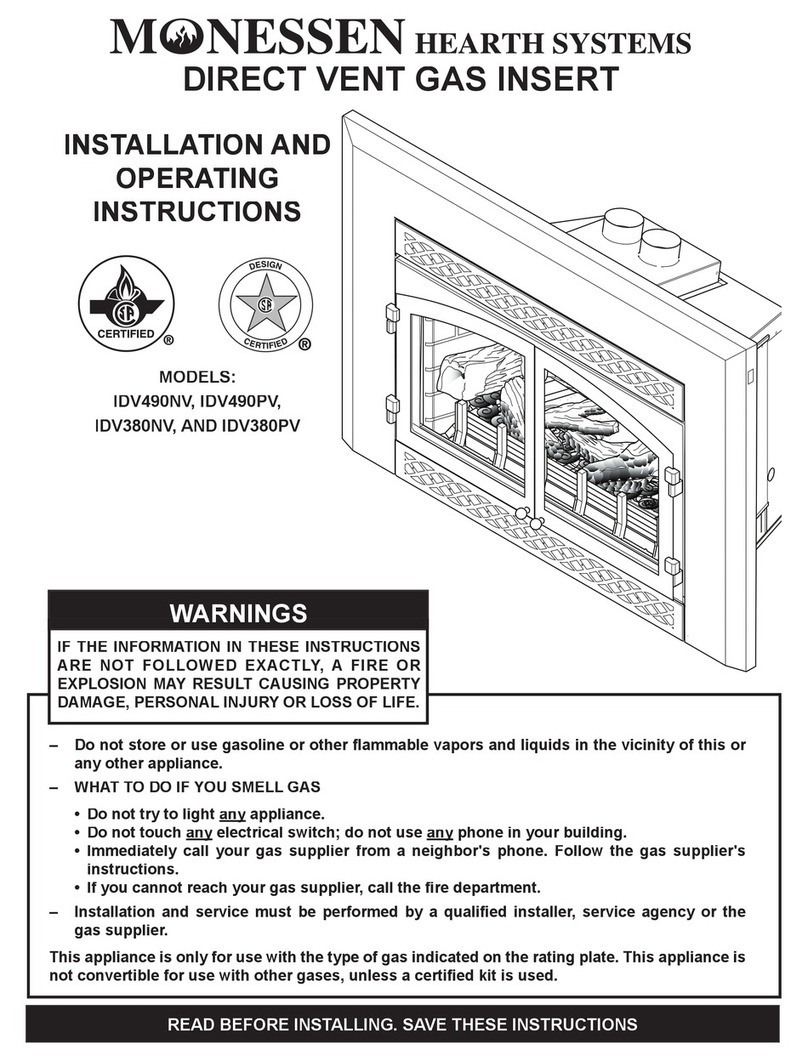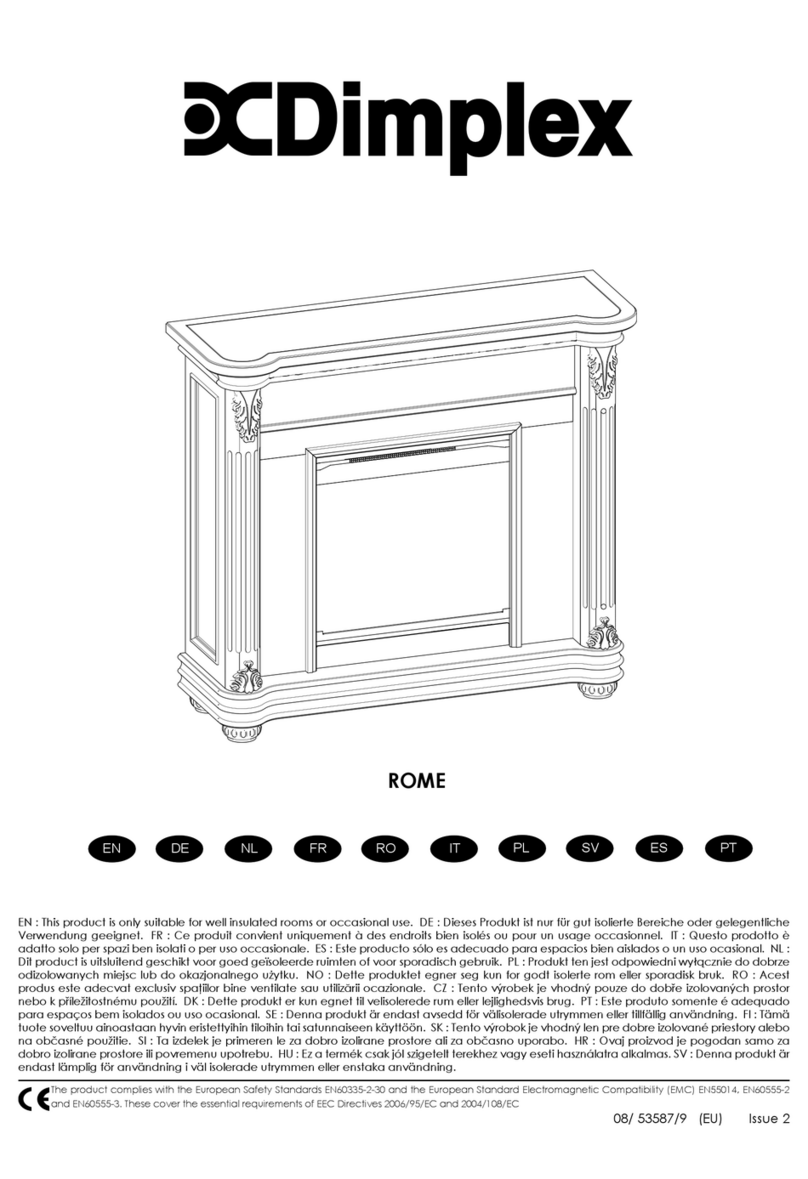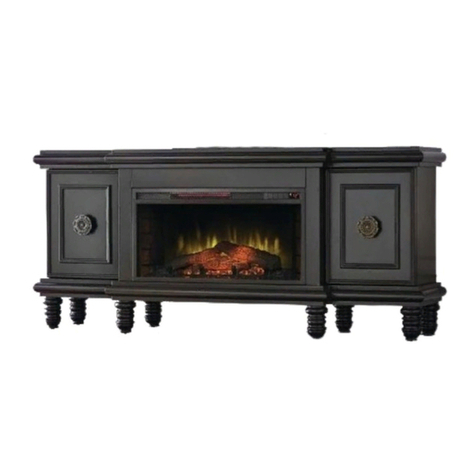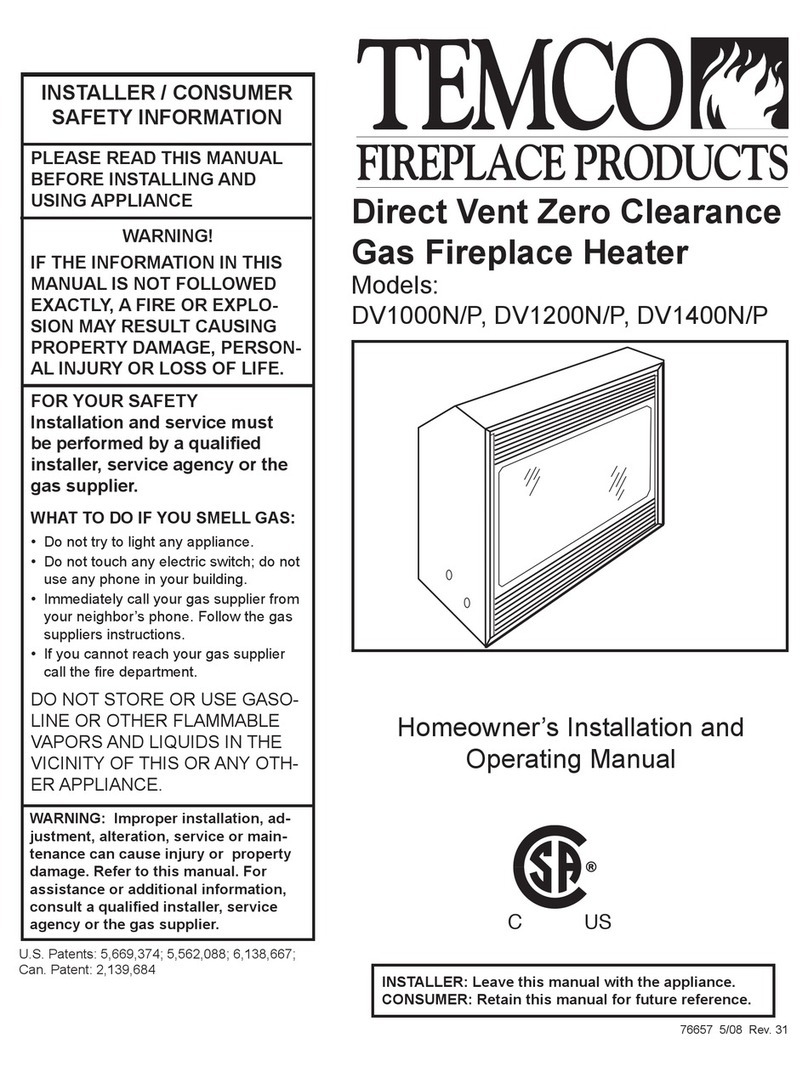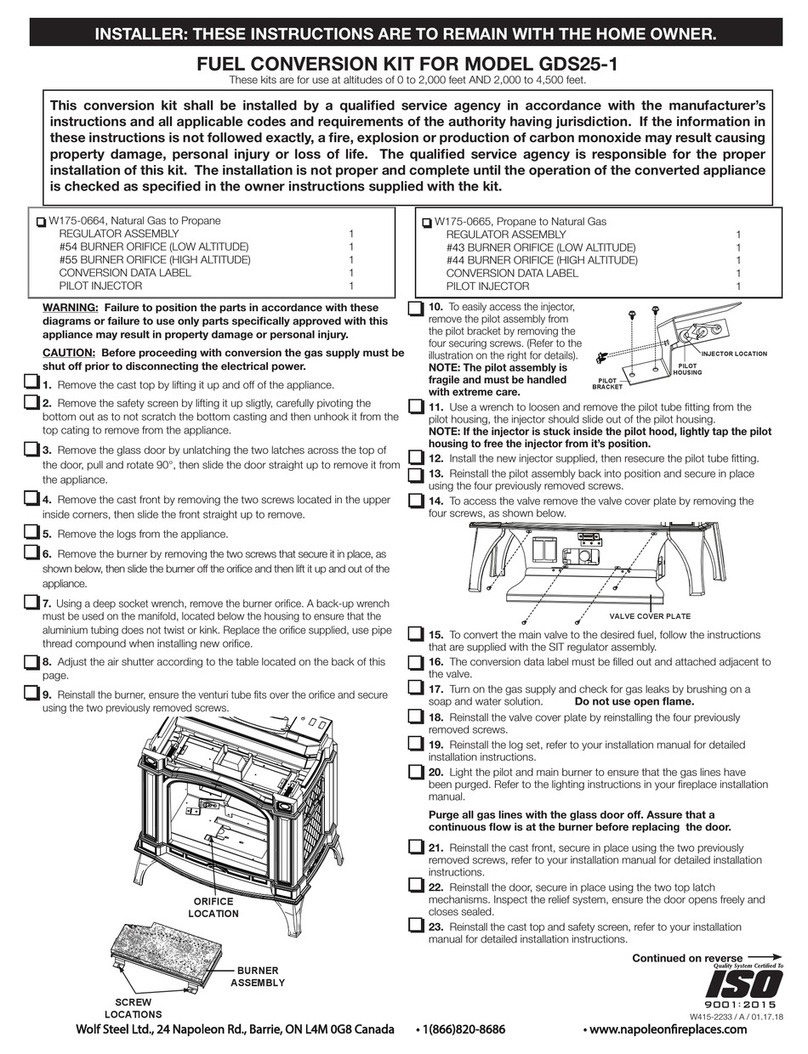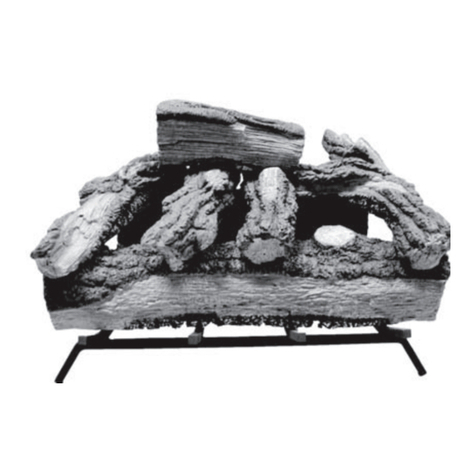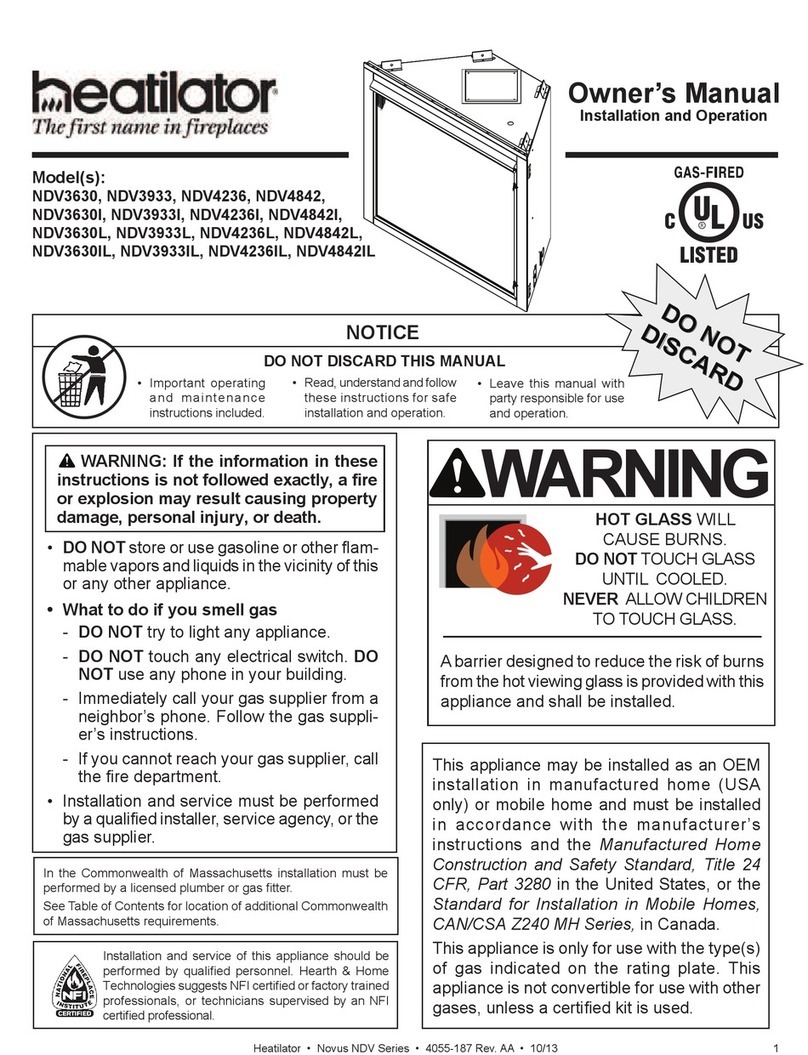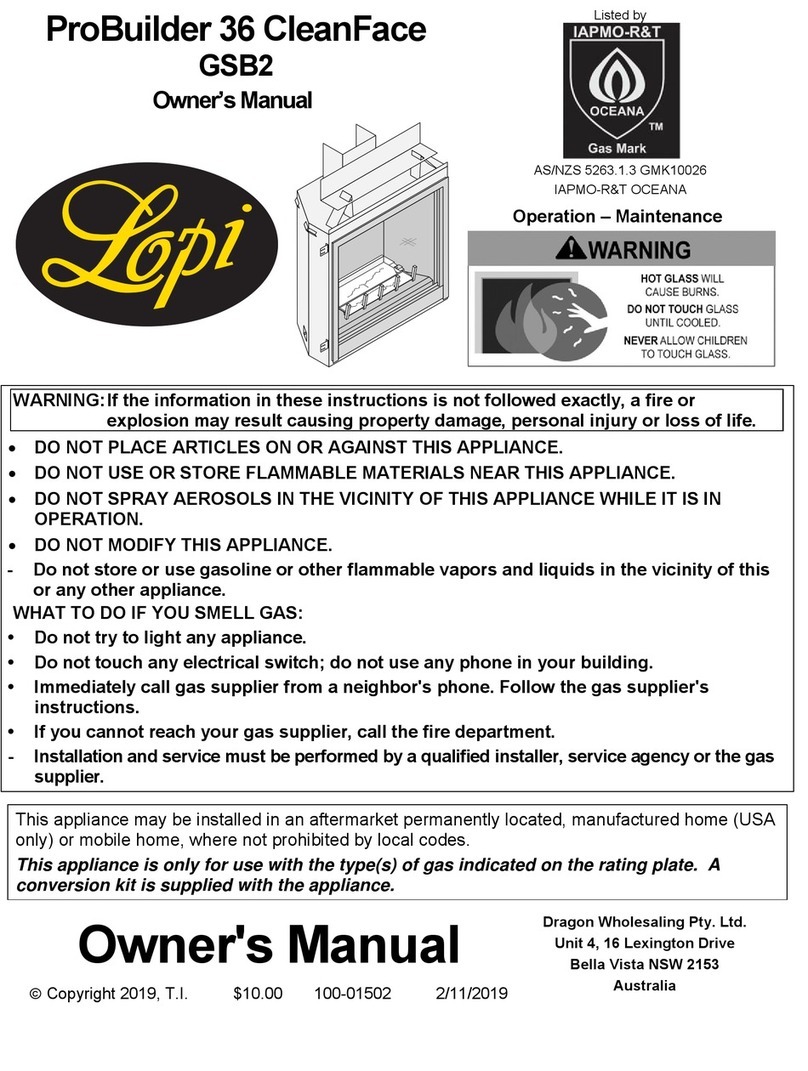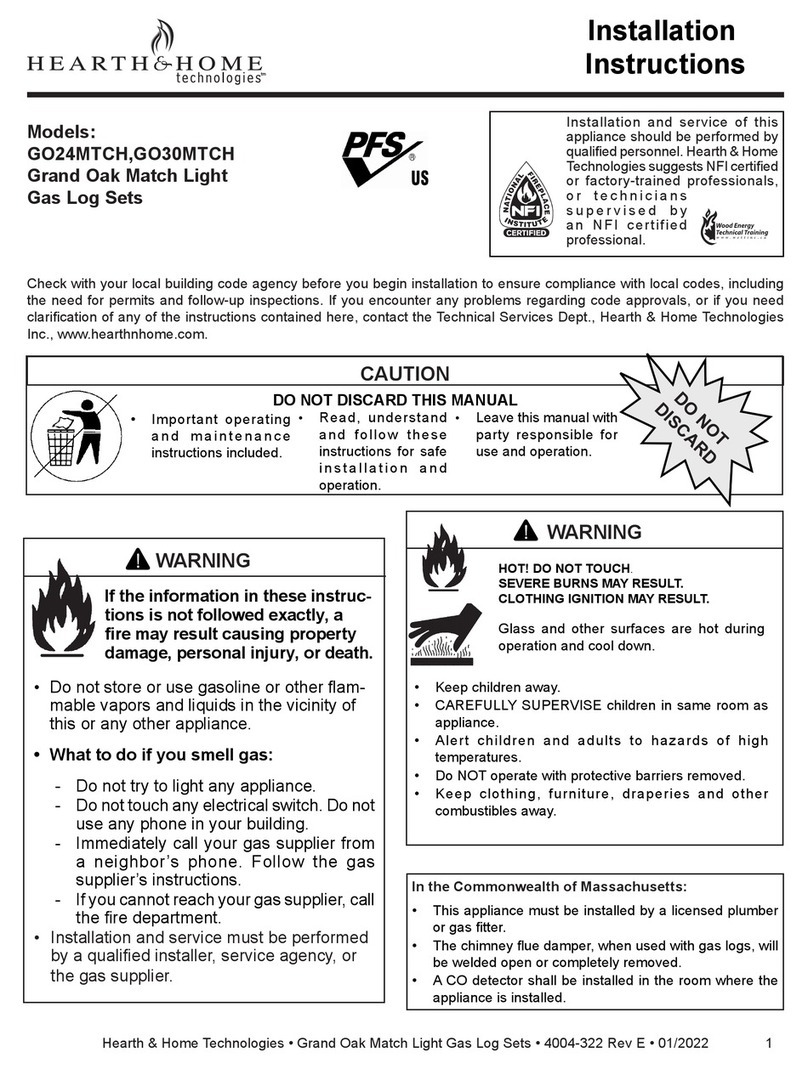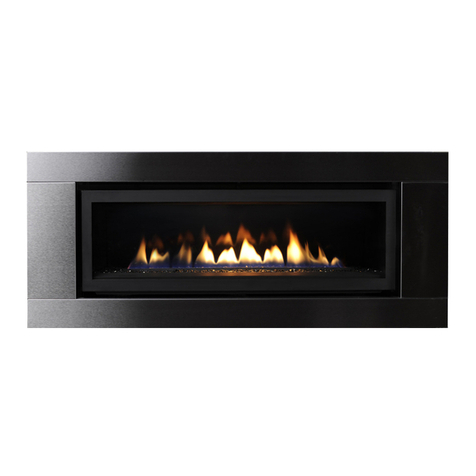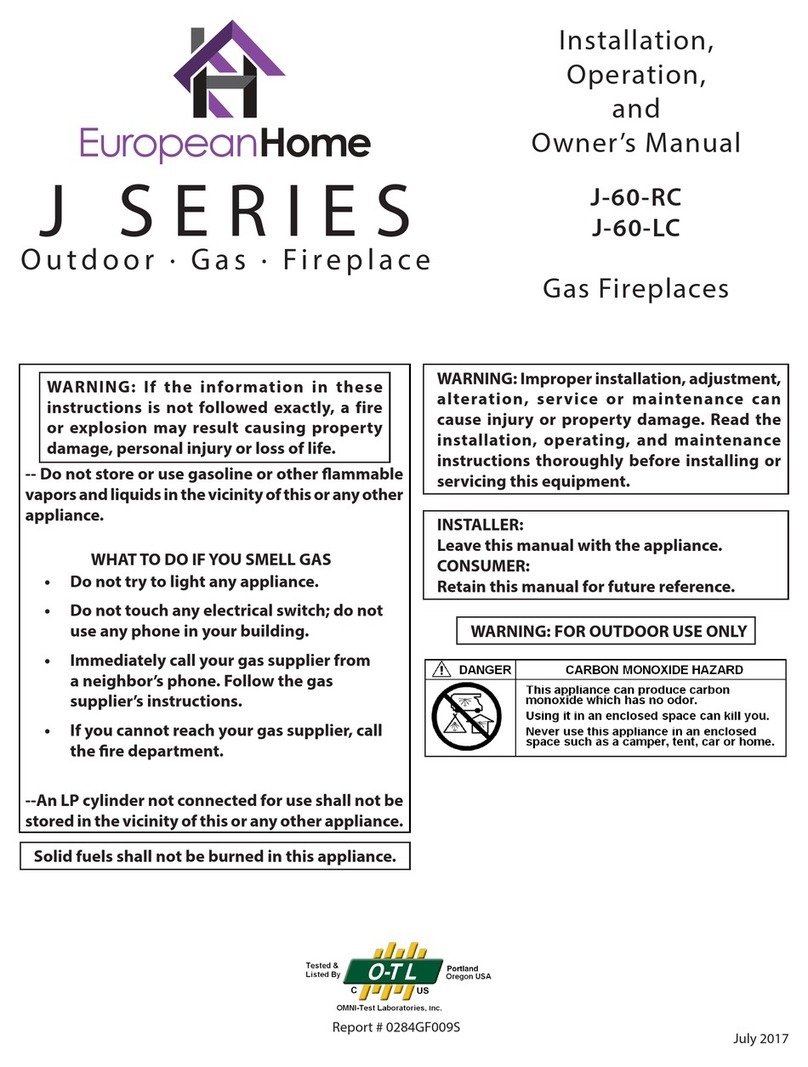
67
Propane is a flammable gas which can cause fires and explosions.
In its natural state, propane is odorless and colorless. You may
not know all the following safety precautions which can protect
both you and your family from an accident. Read them carefully
now, then review them point by point with the members of your
household. Someday when there may not be a minute to lose;
everyone’s safety will depend on knowing exactly what to do. If,
after reading the following information, you feel you still need
more information, please contact your gas supplier.
PROPANE GAS WARNING ODOR
DANGER
If a gas leak happens, you should be able to smell the gas because
of the odorant put in the Propane Gas. That’s your signal to go
into immediate action!
• Do not operate electric switches, light matches, or use your
phone. Do not do anything that could ignite the gas.
• IMMEDIATELY get everyone out of the building, vehicle,
trailer, or area.
• Close all gas tank or cylinder supply valves.
• Propane gas is heavier than air and may settle in low areas
such as basements. When you have reason to suspect a gas
leak, keep out of basements and other low areas. Stay out
until firefighters declare them to be safe.
• Use your neighbor’s phone and call a trained propane gas
service person and the fire department. Even though you
may not continue to smell gas, do not turn on the gas again.
Do not re-enter the building, vehicle, trailer, or area.
• Finally, let the service man and firefighters check for
escaped gas. Have them air out the area before you return.
Properly trained propane gas service people should repair
the leak, then check and relight the gas appliance for you.
NO ODOR DETECTED - ODOR FADE
Some people cannot smell well. Some people cannot smell the
odor of the chemical put into the gas. You must find out if you
can smell the odorant in propane. Smoking can decrease your
ability to smell. Being around an odor for a time can aect your
sensitivity or ability to detect that odor. Sometimes other odors in
the area mask the gas odor. People may not smell the gas odor or
their minds are on something else. Thinking about smelling a gas
odor can make it easier to smell.
The odorant in propane gas is colorless, and it can fade under
some circumstances. For example, if there is an underground
leak, the movement of the gas through soil can filter the odorant.
Odorants in propane gas are also subject to oxidation. This fading
can occur if there is rust inside the storage tank or in iron gas
pipes.
The odorant in escaped gas can adsorb or absorb onto or into
walls, masonry and other materials and fabrics in a room. That
will take some of the odorant out of the gas, reducing its odor
intensity.
A SAFETY INFORMATION FOR USERS OF PROPANE GAS
Propane gas may stratify in a closed area, and the odor intensity
could vary at dierent levels. Since it is heavier than air, there
may be more odor at lower levels. Always be sensitive to the
slightest gas odor. If you detect any odor, treat it as a serious
leak. Immediately go into action as instructed earlier.
SOME POINTS TO REMEMBER
• Learn to recognize the odor of propane gas. Your local
propane gas dealer can give you a “Scratch and Sni”
pamphlet. Use it to find out what the propane odor smells
like. If you suspect that your propane gas has a weak or
abnormal odor, call your propane gas dealer.
• If you are not qualified, do not light pilot lights, perform
service, or make adjustments to appliances on the
propane gas system. If you are qualified, consciously think
about the odor of propane gas prior to and while lighting
pilot lights or performing service or making adjustments.
• Sometimes a basement or a closed-up house has a musty
smell that can cover up the propane gas odor. Do not try
to light pilot lights, perform service, or make adjustments
in an area where the conditions are such that you may not
detect the odor if there has been a leak of propane gas.
• Odor fade, due to oxidation by rust or adsorption on walls
of new cylinders and tanks, is possible. Therefore, people
should be particularly alert and careful when new tanks
or cylinders are placed in service. Odor fade can occur
in new tanks, or reinstalled old tanks, if they are filled
and allowed to set too long before refilling. Cylinders
and tanks which have been out of service for a time may
develop internal rust which will cause odor fade. If such
conditions are suspected to exist, a periodic sni test of
the gas is advisable. If you have any question about the
gas odor, call your propane gas dealer. A periodic sni
test of the propane gas is a good safety measure under
any condition.
• If, at any time, you do not smell the propane gas odorant
and you think you should, assume you have a leak. Take
the same immediate action recommended above for the
occasion when you do detect the odorized propane gas.
• If you experience a complete “gas out,” (the container
is under no vapor pressure), turn the tank valve o
immediately. If the container valve is left on, the
container may draw in some air through openings such
as pilot light orifices. If this occurs, some new internal
rusting could occur. If the valve is left open, then
treat the container as a new tank. Always be sure your
container is under vapor pressure by turning it o at the
container before it goes completely empty or having it
refilled before it is completely empty.
For all side wall horizontally vented gas fueled equipment installed
in every dwelling, building or structure used in whole or in part for
residential purposes, including those owned or operated by the
Commonwealth and where the side wall exhaust vent termination
is less than seven feet above finished grade in the area of the
venting, including but not limited to decks and porches, the
following requirements shall be satisfied:
1. INSTALLATION OF CARBON MONOXIDE
DETECTORS.
At the time of installation of the side wall horizontal vented
gas fueled equipment, the installing plumber or gas-fitter
shall observe that a hard wired carbon monoxide detector
with an alarm and battery back-up is installed on the
floor level where the gas equipment is to be installed. In
addition, the installing plumber or gas-fitter shall observe
that a battery operated or hard wired carbon monoxide
detector with an alarm is installed on each additional level
of the dwelling, building, or structure served by the side
wall horizontal vented gas fueled equipment. It shall be the
responsibility of the property owner to secure the services
of qualified licensed professionals for the installation of
hard wired carbon monoxide detectors
a. In the event that the side wall horizontally vented
gas fueled equipment is installed in a crawl space or
an attic, the hard wired carbon monoxide detector
with alarm and battery back-up may be installed on
the next adjacent floor level.
b. In the event that the requirements of this
subdivision can not be met at the time of
completion of installation, the owner shall have
a period of thirty days to comply with the above
requirements; provided, however, that during
said thirty day period, a battery operated carbon
monoxide detector with an alarm shall be installed.
2. APPROVED CARBON MONOXIDE DETECTORS.
Each carbon monoxide detector as required in accordance
with the above provisions shall comply with NFPA 720 and
be ANSI/UL 2034 listed and IAS certified.
3. SIGNAGE.
A metal or plastic identification plate shall be permanently
mounted to the exterior of the building at a minimum
height of eight feet above grade directly in line with the
exhaust vent termination for the horizontally vented gas
fueled appliance or equipment. The sign shall read, in print
size no less than 1/2 inch in size, “GAS VENT DIRECTLY
BELOW. KEEP CLEAR OF ALL OBSTRUCTIONS”.
A REQUIREMENTS FOR MASSACHUSETTS
4. INSPECTION.
The state or local gas inspector of the side wall
horizontally vented gas fueled equipment shall not
approve the installation unless, upon inspection, the
inspector observes carbon monoxide detectors and
signage installed in accordance with the provisions of 248
CMR 5.08(2)
a. 1 through 4.
b. EXEMPTIONS: The following equipment is
exempt from 248 CMR 5.08(2)(a)1 through 4:
1. The equipment listed in Chapter 10 entitled
“Equipment Not Required To Be Vented”
in the most current edition of NFPA 54 as
adopted by the Board; and
2. Product Approved side wall horizontally vented
gas fueled equipment installed in a room or
structure separate from the dwelling, building,
or structure used in whole or in part for
residential purposes.
c. MANUFACTURER REQUIREMENTS - GAS
EQUIPMENT VENTING SYSTEM NOT
PROVIDED.
When the manufacturer of a Product Approved
side wall horizontally vented gas fueled equipment
does not provide the parts for venting the flue
gases, but identifies “special venting systems”, the
following requirements shall be satisfied by the
manufacturer:
1. The referenced “special venting system”
instructions shall be included with the appliance
or equipment installation instructions; and
2. The “special venting systems” shall be Product
Approved by the Board, and the instructions
for that system shall include a parts list and
detailed installation instruction.
a. A copy of all installation instructions for all
Product Approved side wall horizontally vented gas
fueled equipment, all venting instructions, all parts
lists for venting instructions, and/or all venting
design instructions shall remain with the appliance
or equipment at the completion of the installation.




















